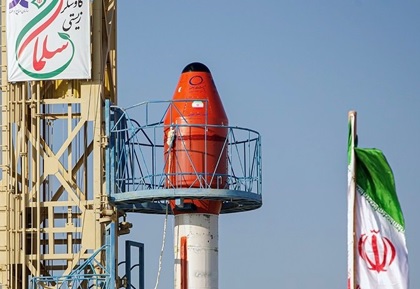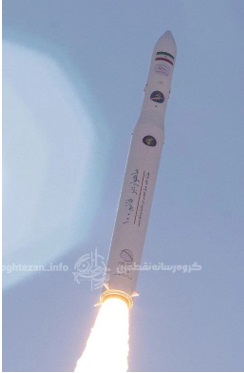Special to CosmicTribune.com, January 31, 2024
By Richard Fisher
On Jan. 28, two days after the United States beseeched China to help stop Iranian-fueled warfare against Israel and Western shipping in the Middle East, Iran became the first Arab state to launch three satellites into space from one rocket, on its Simorgh (Phoenix) liquid-fueled space launch vehicle (SLV).

This followed the Jan. 20 successful test launch of Iran’s Qaem-100 (Upright) solid-fueled SLV.
In these SLV launches, Iran demonstrated to its antagonists in Washington and in Europe that it is rapidly assembling the means to produce both solid and liquid fueled intercontinental ballistic missiles (ICBMs) that could soon be armed with nuclear warheads.
The possible 7th launch of the Simorgh on Jan. 28 was also the first fully successful flight in that it placed the 32 kilogram (71 pound) “Mahda” satellite and two 10kg nanosatellites in a 1100×450 kilometer orbit.
With a potential payload of 200 kilograms (440 pounds) for Low Earth Orbit, Simorgh is a 90-ton three-stage liquid-fueled SLV with a 4-engine 2.7-meter first stage, with the second stage of 1.7 meters also powered by four smaller engines and a same-diameter single engine third stage.
In its 2020 Ballistic and Cruise Missile Threat publication, the National Air and Space Intelligence Center (NASIC) of the U.S. Air Force stated that the Simorgh “could serve as a test bed for developing ICBM technologies.”
The same assessment could be made of the solid-fueled Qaem-100 SLV, a program of the elite Iran Revolutionary Guards.
On Jan. 20, the third flight (second successful) of the Qaem-100 put a 50kg Soraya surveillance satellite into a 750km orbit.
With an estimated weight of 17 to 19 tons, the Qaem-100 could be modified as a single warhead mobile solid-fuel ICBM that could be concealed in cave missile bases.
Iranian sources suggest a Qaem-100 based ICBM could have a 320kg to 350kg payload and a range of 10,000 kilometers (6,200 miles), sufficient to reach Washington D.C. from Iran.


In a Dec. 22, 2023 article, the Wisconsin Project on Nuclear Arms Control estimated that Iran has sufficient enriched uranium, that with further enriching, could allow Iran in three to five weeks to produce enough highly enriched uranium for up to five nuclear weapons.
Full Text . . . . Current Edition . . . . Subscription Information

You must be logged in to post a comment Login